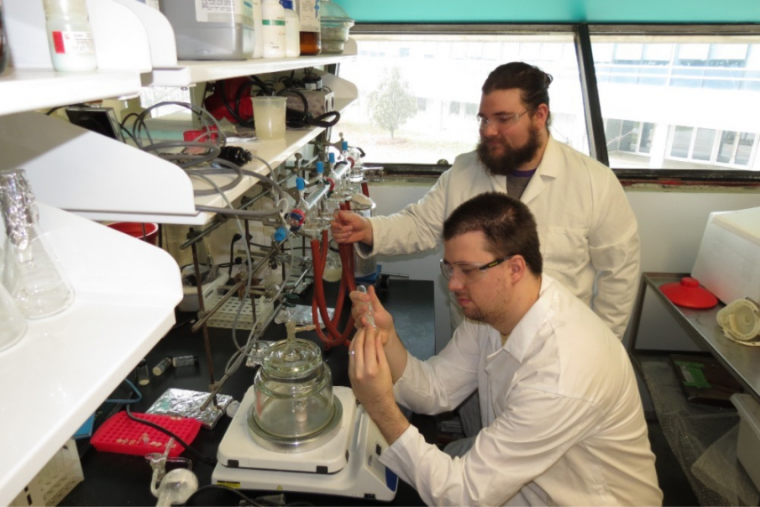
The production of key chemical compounds could aid in the development of new cancer therapies
Cancer is one of the greatest health risks we face as a society, and developing new cancer treatments is a major area of active research. One such treatment is the development of cancer vaccines and other immunotherapies - treatments that promote the body’s own immune system to combat disease. These treatments work when substances called antigens displayed at the surface of harmful organisms, such as bacteria, viruses, or allergens, enter the body. These antigens are recognized by our immune systems, and a specialized protein called an antibody is produced to fight off the antigen. In a similar way, cancer vaccines would help the body produce the right antibodies for fighting off harmful cancerous cells. However, in order to be successful, our immune systems need a way of recognizing cancerous cells.
Tumor-associated carbohydrate antigens (TACAs), a particular type of antigen, are produced in much greater quantities on the surface of cancerous cells than normal cells. With the help of a cancer vaccine, these antigens could be targeted by antibodies to combat the diseased cells. Since their discovery in the 1960s, TACAs have been used in the development of new cancer treatments. However, more work is needed to effectively use these compounds in cancer vaccines and other immunotherapies.
Producing Tumor-Associated Antigens
Synthesis is a chemical process where desired compounds are produced by reacting other, often simpler, compounds. Dr. France-Isabelle Auzanneau [1], a Professor in the Department of Chemistry at the University of Guelph, and her PhD students Jeffrey Davidson [2] and Charles Gauthier-Signore [3], are working on synthesizing TACAs. The team wants to learn more about these compounds and how they can be used in cancer treatments. The PhD work of Dr. Jeffrey Davidson who has now graduated focused on two different TACAs with related structures – “Lewis A-Lewis A” and “Lewis B-Lewis A” TACAs. These compounds are notoriously difficult to synthesize in the lab and despite their promising potential in cancer treatments, relatively little research has been done on them.

Department of Chemistry
The team decided to focus on synthesizing small pieces (fragments) of the full TACA structures. Think of these fragments as puzzle pieces that can be combined to create a complete picture, or in this case a complete TACA structure. After attempting three different strategies to produce these pieces, the team was eventually successful in synthesizing eight different fragments of the desired TACA structures. These fragments share the same structural and chemical elements as portions of the full TACA structure, which can be used to better understand which pieces, or combination of pieces, are critical to producing an immune response from the human body. “These fragments are essentially tools to study TACAs,” says Auzanneau. Being able to produce these compounds makes studying them much easier, and could help aid in their development into new cancer treatments.
Developing New Therapies
Auzanneau and her research team plan to test if their newly synthesized TACA fragments could elicit an immune response in an upcoming study. Understanding which antigen fragments bind to antibodies could help unravel the complex processes that take place between cancerous cells and the body’s immune system. “We want to know the minimum structure needed to elicit an immune response,” says Auzanneau. The successful binding of the TACA fragments to antibodies would be a promising first step in developing new cancer immunotherapies.
This story was written by Carley Miki as part of the Science Communicators: Research @ CEPS [4] initiative. Miki is a PhD candidate in the Department of Physics under Dr. John Dutcher. Her research focus is on understanding the forces and interactions between soft, sugar-based nanoparticles and how they differ when charged.
Funding Acknowledgement: This work was supported by Natural Sciences and Engineering Research Council of Canada (NSERC).
Reference: Davidson, J., Gauthier-Signore, C., Auzanneau, F.-I. Synthesis of Dimeric Lewis A and Lewis B−Lewis A TumorAssociated Carbohydrate Antigen Oligosaccharide Fragments. J. Org. Chem.. 2023, 88 (9), 5554-5562. doi: https://pubs.acs.org/action/showCitFormats?doi=10.1021/acs.joc.3c00082&ref=pdf [5]